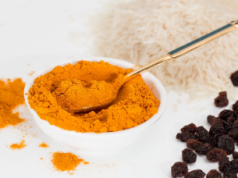It is crucial to use the inhaler correctly in order for the medication to go to the lungs and reduce symptoms.
Every year, World Asthma Day is observed on the first Tuesday of May. This time, as set by the Global Initiative for Asthma, the theme is ‘Asthma Care for All’, and calls for equal access to treatment and care related to asthma to people of all classes and economic levels.
Understanding asthma and its symptoms
In asthma — which is an inflammatory disease of the airways — the airways of the patient get inflamed on coming in contact with irritants or triggers causing it to become narrow, which results in the tightening of the muscles around them causing breathlessness. “It is a chronic condition with no permanent cure but can be well-controlled with appropriate treatment,” said Dr Arunesh Kumar, Head & Senior Consultant- Pulmonology & Respiratory Medicine, Paras Health, Gurugram.
He added that the severity of symptoms varies among patients and might depend upon their age, sex, and genetic disposition. “The most common signs and symptoms include breathlessness or shortness of breath, tightness in the chest, coughing, chest pain, and wheezing (a whistling sound when breathing),” he told indianexpress.com.
Triggers
According to Dr Kinjal Modi, Consultant, Pulmonology, PD Hinduja Hospital & Medical Research Centre, Khar, the factors that may trigger or worsen asthma symptoms include viral infections, domestic or occupational allergens (e.g. house dust mites, pollens, cockroaches), indoor and outdoor pollution, tobacco smoke, exercise, stress, and some drugs. “Asthma flare-ups (also called exacerbations or attacks) can be fatal,” she noted.
Treatment
Dr Kumar said that inhalers are the frontline and mainstay of treatment for asthma and help provide relief during an asthma attack. “The medication used in inhalers can be of various types, like corticosteroids, long-acting beta-agonists (LABAs), short-acting beta-agonists (SABAs) and anticholinergics.”
Concurring, Dr Modi said that the different groups of inhalers available in the market include dry powder inhalers like rotahalers, lupihalers, diskhalers, turbohaler and revoliser, along with metered dose inhalers and breath actuated devices like synchrobreathe. “The right type of inhaler depends on the age of the patient, hand mouth coordination, financial status, choice of patient and patient’s inhalational capacity,” he said.
How to properly use an inhaler
Dr Kumar said that it is extremely important to use the inhaler the correct way, so that the medicine reaches the lungs and helps ease symptoms. The most common type of inhaler is a metered dose inhaler, also known as puffer.
Here are the steps to use a puffer:
*To use a puffer, shake the inhaler well and breathe out fully.
*Next, fit the inhaler into the opening at the end of the spacer.
*Finally, puff the medicine, breath in as deeply as possible.
*Now, hold your breath for five to ten seconds. Slowly breathe out.
Another type of inhaler is an autohaler, which is activated by breathing in.
*To use an autohaler, shake it well and breathe out fully away from the autohaler.
*Place the inhaler in the right position and gently breath in slowly and deeply until you have taken a full breath.
*Hold your breath for around 10 seconds before removing the autohaler and breathing out.
“If you are not sure about using the inhaler the right way, consult a doctor. There are also a lot of online videos available by doctors that you can use for reference,” said Dr Kumar.
Further, he mentioned that the biggest advantage of an inhaler is that it gives immediate relief to patients by releasing the medication directly into the airways. “Since it is lightweight and portable, it can be carried anywhere. It is also easy to use and can be used by children as well. Moreover, the dose of an inhaler is almost one-tenth of the dose taken in oral form, which reduces side-effects significantly.”
Concluding, Dr Kumar said, “Numerous inhaler devices and medications are available today for the treatment of asthma. But there is no one size fits all approach when it comes to managing asthma symptoms. The best way to find which inhaler and medication is suited for you is to consult your pulmonologist.”









